Through her travels, professional photographer Sandy Sharkey has pursued her passion for capturing images of the wild and natural world. Although Sandy resides in Ottawa, Ontario, Canada, her work has taken her on a life’s journey to photograph wild horses and so much more. I remember the first time I saw Sandy’s images of wild horses and I found them to be utterly breathtaking. Sandy has truly captured the essence of these majestic creatures in their natural surroundings. Through speaking engagements and her work, Sandy hopes to educate the public and stress how vital it is for advocating for the freedom of these spirited animals.
Sandy, thank you so much for taking the time to share your thoughts and views of the beauty of nature through your words and photography and for allowing us to get to know a bit about you. I wish the best of luck to you and on your future projects.
If you’d like to learn more about Sandy’s work, please visit her website. You can also follow her on Instagram.
Can you please tell the readers a bit about yourself?
For over thirty years, I was a radio broadcaster~ hosting a morning radio show for various radio stations and music formats. My world was all about music, interviewing bands, going to concerts, and interacting with listeners ~ sharing the information that they needed while (hopefully) putting a smile on their faces and sharing some laughs. We all started our day together. But I spent all my ‘off time’ with my camera, in nature, capturing images of wildlife. While most people work from 9 to 5, I worked from 5:30 am to 9 am- so I had a lot of freedom to explore with my camera.
Where do you call home?
Ottawa, Ontario, Canada.
After browsing through your website, I see that you have built up an extensive collection of wonderful photography. When did you first become interested in photography and how long have you been involved with it?
I’ve been interested in photography as long as I can remember. But it really kicked into overdrive when I experienced my first wild horses, at Return to Freedom Wild Horse Sanctuary in Lompoc California. The year was 2013. Not only did I enjoy photographing the wild horses, I realized that I could use my photography to help spread awareness about the issues facing wild horses. Since 2013 I have traveled throughout the American southwest to photograph wild horses in New Mexico, Arizona, Nevada, Utah, Wyoming, Colorado, Montana, and North Dakota. I have photographed Canadian wild horses in Alberta’s Rocky Mountain foothills, and off the east coast of Nova Scotia on Sable Island. I have also traveled to Mongolia to photograph the rare wild Przewalski’s horses, as well as the Kaimanawa wild horses of New Zealand. While most of my photographic journeys focus on wild horses, the Great Bear Rainforest in northern BC was also an incredible experience~ to be immersed in such pristine wilderness, to have the opportunity to photograph the rare white Spirit bear, grizzlies and the rare coastal wolf~ was nothing short of magical. And last summer I finally realized my lifelong dream to see African wildlife, not in a zoo- but where they live. My husband and I hired a guide for 19 glorious days in Botswana. We slept in a tent with lions roaring throughout the night. We watched countless elephant families with youngsters, mothers, fathers, aunts, uncles, cousins, friends… such beautiful relationships! Wild dogs, leopards, hippos, crocodiles, giraffes, impalas, baboons, cheetahs… I documented over 130 species of African animals and birds. Botswana was one of the most rewarding photographic experiences of my life. In the summer of 2020, I will be leading a photographic adventure in Botswana and I can’t wait to share this experience!
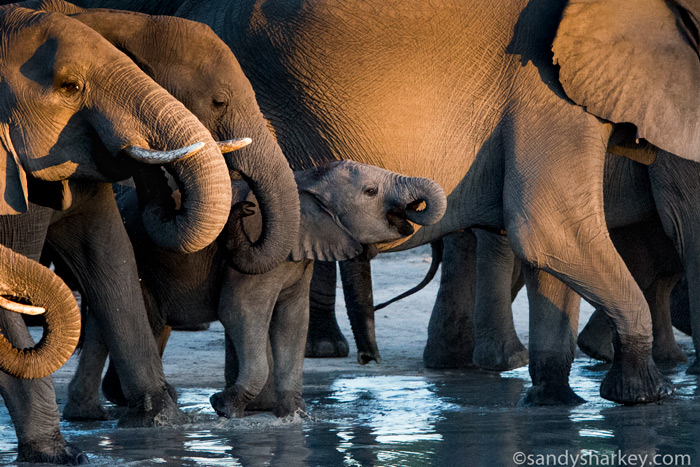
Are you formally-taught or self-taught? And what has been the best source of information along this journey (workshop, online forums, classroom, mentor, etc)?
When I bought my first digital camera, I took a couple of short workshops hosted by local photographers. These workshops were limited to 4 or 5 people. Once I knew the digital photography basics, I knew that wild horse photography was going to be my main focus so I did some research to find the best wild horse photographers. This is how I found ‘Return to Freedom Wild Horse Sanctuary’. Two incredible equine photographers, Kimerlee Curyl and Tony Stromberg, were hosting a wild horse photography workshop at the sanctuary. This experience changed my life. If you love a certain genre of photography, I highly recommend seeking out the best in that genre and signing up for one of their workshops. Not only will you learn from the best, but you will also be hands-on and immersed in doing what YOU love~ which goes a long way towards fueling your passion to improve your skills.
When shooting subjects, what do you find most challenging?
Wild horses live in beautiful places. When you are with wild horses, you are likely on a mountaintop, or in the desert, or in the case of Sable Island, you have wind, blowing sand, and salt spray to deal with. Since wild horses are in remote areas, you have to be very prepared for anything mother nature is going to throw at you. I’ve had to repair a lot of cameras and lenses due to salt and sand. I once left a tripod in place on a grassy ridge and when I returned later, a wild horse was flinging it around like a rag doll just for fun.
I now bring a lot of plastic sleeves and cover-ups for my camera bodies in case of rain or snow or salt spray… but when I’m caught up in the moment, photographing wild horses~ well, let’s just say my local camera repair shop knows me by my first name.
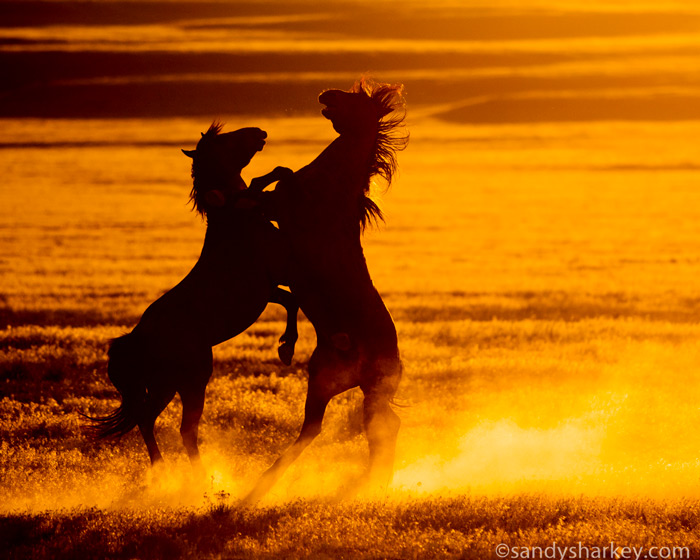
What would you say your most remarkable wildlife encounter has been?
That’s a really tough question! Wild horses running through the desert at sunset. A black bear and a white spirit bear fighting over territory in the Great Bear Rainforest. An elephant family mourning a deceased relative in Botswana. There are so many moments in the wild that have left me speechless or with tears of joy pouring down my face. I had always wanted to see a wolf in the wild. I don’t believe in photographing animals in zoos- that’s always been a personal motto for me, so I was either going to find a wolf in its natural environment, or I was never going to see a wolf in my lifetime. In 2017, my husband and I joined a small group in BC’s Great Bear Rainforest. We followed our wonderful guide Mike Beedell to an inlet where the rare coastal wolf is occasionally seen. This wolf has a marine diet consisting of fish and salmon. We sat in the edge of the forest, hidden from view, hoping that we might catch a glimpse of a fishing wolf. We waited for hours. Suddenly a male wolf appeared across the inlet, sniffed the air, then casually lay down in the tall grass. Now almost hidden from view, we felt fortunate to have seen the wolf for those few fleeting seconds. It was dusk and we were losing light so we began to pack up. I could barely see the tips of the wolf’s ears in the tall grass off in the distance and was resigned to the fact that my wolf experience had come to an end. But then something happened. Deep in the forest, a chorus of wolves began to sing. The male wolf in the grass stood up, stretched, and answered the song from the forest. The wolf pack was calling out to the alpha male to come home and re-join the group. After taking a few minutes to vocalize and let the pack know where he was, the wolf disappeared into the forest and silence returned. I could not believe what I had just experienced. As a photographer, ‘getting the shot’ is so important… but in this case, it was not about getting the shot. This was a gift from nature. From the pristine forest where the giant trees are hundreds of years old, came the most beautiful song I have ever heard. It still gives me chills thinking about it.
Location and weather conditions seem to be a crucial aspect of a successful photograph. How do you handle these unpredictable factors?
Always prepare for the worst. Rain, snow, sleet, hail, salt spray. I bring lots of plastic sleeves with elastic bands and do my best to keep my gear covered and protected. But I’m not always successful, lol. I keep a lot of lens cloths in my pocket to wipe raindrops and dust from my lenses as often as needed.
What is your favorite part of heading out to a new location?
I love to explore new locations and find unexpected surprises. Wild horse photographers around the world are great at sharing information. Before I go to a new location, I usually put the word out to photographers through social media to get some intel .. but at the end of the day, the horses can be anywhere. You never know what you’ll find while you are searching for horses. I was photographing wild horses in North Dakota when a bison photobombed my shot.
Do you have any tips for new photographers who want to take better wildlife photographs?
Take a workshop hosted by a pro wildlife photographer. Then spend as much time as you can in the wild… and it doesn’t have to be far from home. If you have a few spare hours a week, go to the nearest forest or pond or fields and capture the wildlife that exists nearby.
How do you keep yourself motivated and your photography fresh?
Travel is a big part of what I do. I am always excited to research new places and find wild horses in areas that I have never been, so it’s always fresh and exciting.
Who or what inspires you in your personal life and work?
I am inspired by people who follow their dreams and do not subscribe to living a ‘cookie-cutter’ life. My heroes are people who dance to their own drummer – but at the same time, they find a way to give back to others. I am particularly drawn to wildlife photographers that are raising awareness through their art.
Share with us your favorite image and why.
One of my favourite images is called ‘Girl Power’. In Botswana, we searched for wildlife by traveling sandy roads in an open Toyota Land Cruiser. For the most part, animals completely ignore vehicles. It’s almost like vehicles – and the people inside- are invisible. For that reason, it is rare for an animal to make eye contact with you while you are sitting in a vehicle. We encountered a pride of lions sleeping in the forest near the road. We waited patiently in our vehicle to see if there would be some movement. Eventually, three lionesses woke up, walked towards our vehicle then disappeared into the field to start their nightly hunt. The image is called ‘Girl Power’ because this was a mother, an aunt, and a daughter. And the best part? They were all making eye contact with me as they walked in step. I just loved their swagger and attitude.
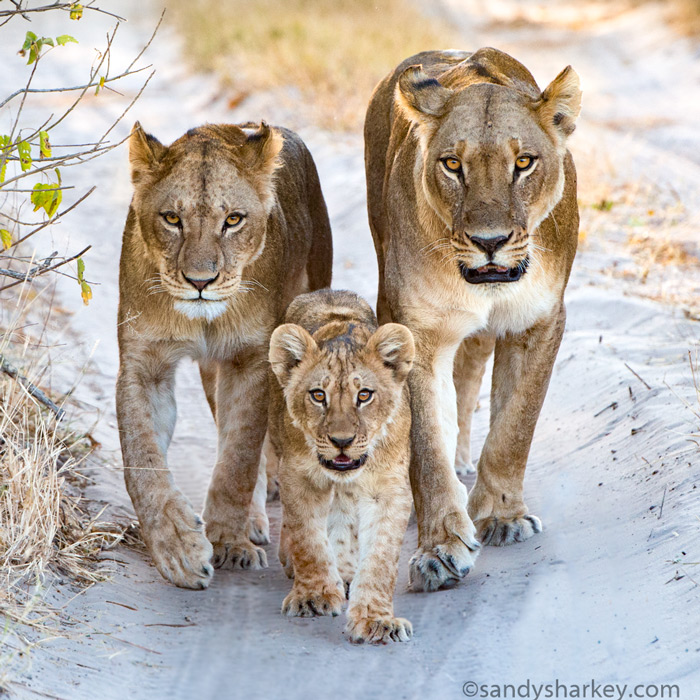
What do you hope viewers take away from your images?
My goal is to create images that are compelling enough for viewers to dig a bit deeper. There is a story behind every image. Through my wild horse photography, I hope to raise awareness about the issues facing these magnificent animals. Wild horses are in trouble, especially in the American southwest. In a couple of weeks, I will be traveling to the Onaqui range in Utah’s Great Basin Desert, home to some of the most beautiful wild horses on the planet. The American government has announced a roundup of 90 percent of these wild horses in 2019. I feel compelled to get there as soon as I can, to photograph the horses while they are still wild and free, and to showcase their beauty in the hopes that more people will add their voices to protect them.
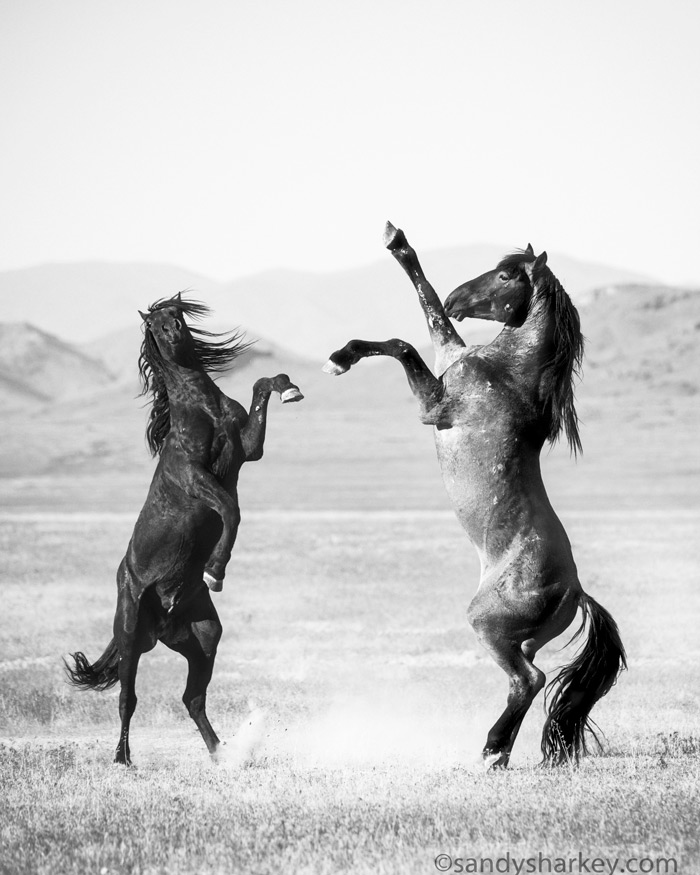
What type of camera(s) do you shoot with? What is your favorite lens?
I have a Nikon D600, a Nikon D750, and a Nikon D800. My favourite lens is the Nikon 70-200mm f 2.8
What is in your camera bag?
Cameras as mentioned above. Lenses: Nikon 70-200mm, 80-400mm, 200-500mm, 24-70mm, 14-24mm, prime lenses 50mm 1.8 and 85mm 1.8.
What is your favorite photography accessory?
My harness. I love it… I can carry two bodies with telephoto lenses for an entire day in the field with my camera harness.
What piece of equipment would you most like to get but don’t have yet?
The new Nikon Z7 mirrorless camera.
How important is Photoshop or other image editing software in your final images?
I use Adobe Lightroom for 99 percent of my workflow. I go to Photoshop if I have to remove a tree from someone’s head.
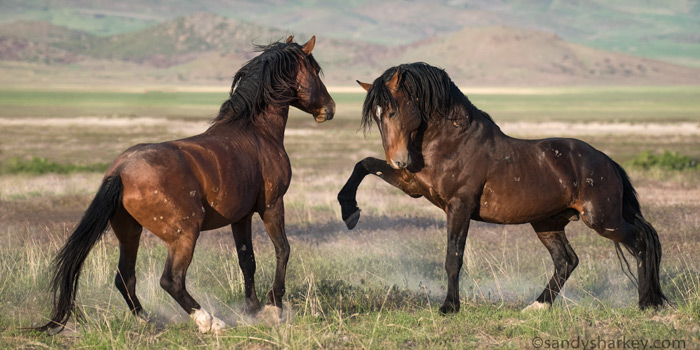
Was there a point in your journey when you started to feel really good about your work? If so, what did it feel like to get past that “tipping point?”
I won a local photography contest for an image that I took of crows flying in a snowstorm. That was my first ‘validation’. It was a really small contest but I was so thrilled to win! That was six years ago.
Do you have any projects that make you look back and shake your head? What made the experience so unpleasant?
When I was first starting out, I discovered the ‘saturation’ slider in Lightroom. When I look back at some of the images from those early days, where the grass is neon green and the sky is the bluest blue that has ever existed since the dawn of civilization, it just makes me laugh. What was I thinking?
What do you think the future holds for you? Where do you see yourself in the next few years?
Travel, travel, and more travel. I am leaning towards more photojournalism. Guiding photographic journeys is also a big part of my future~ with a few wild horse photography trips this year and hosting a guided tour to Botswana in 2020.
Do you see yourself as a photographer many years down the road?
I can’t imagine a day that I will stop being a photographer. Unless all my gear topples over a cliff while I am photographing wild horses one day. Even then, I’m sure my camera repair guy will put back the pieces and I will get right back on the mountain.
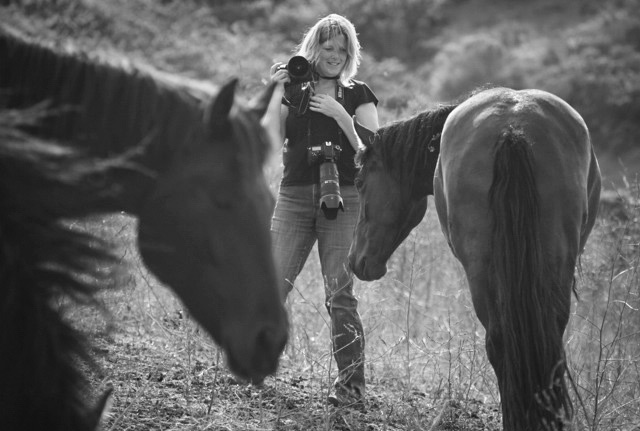
Leave a Reply